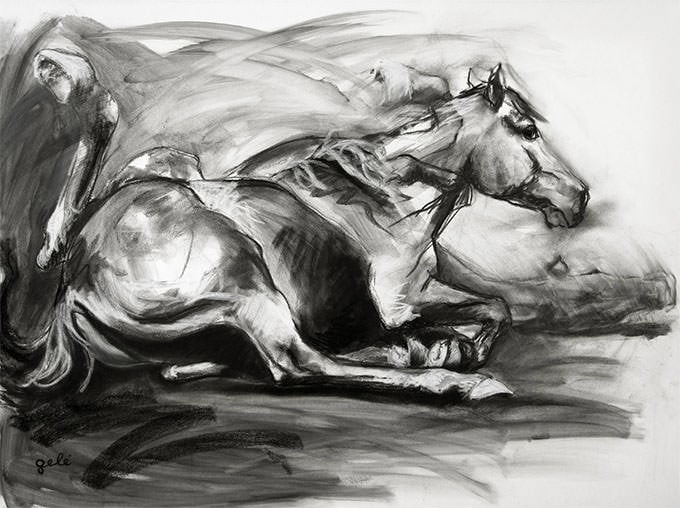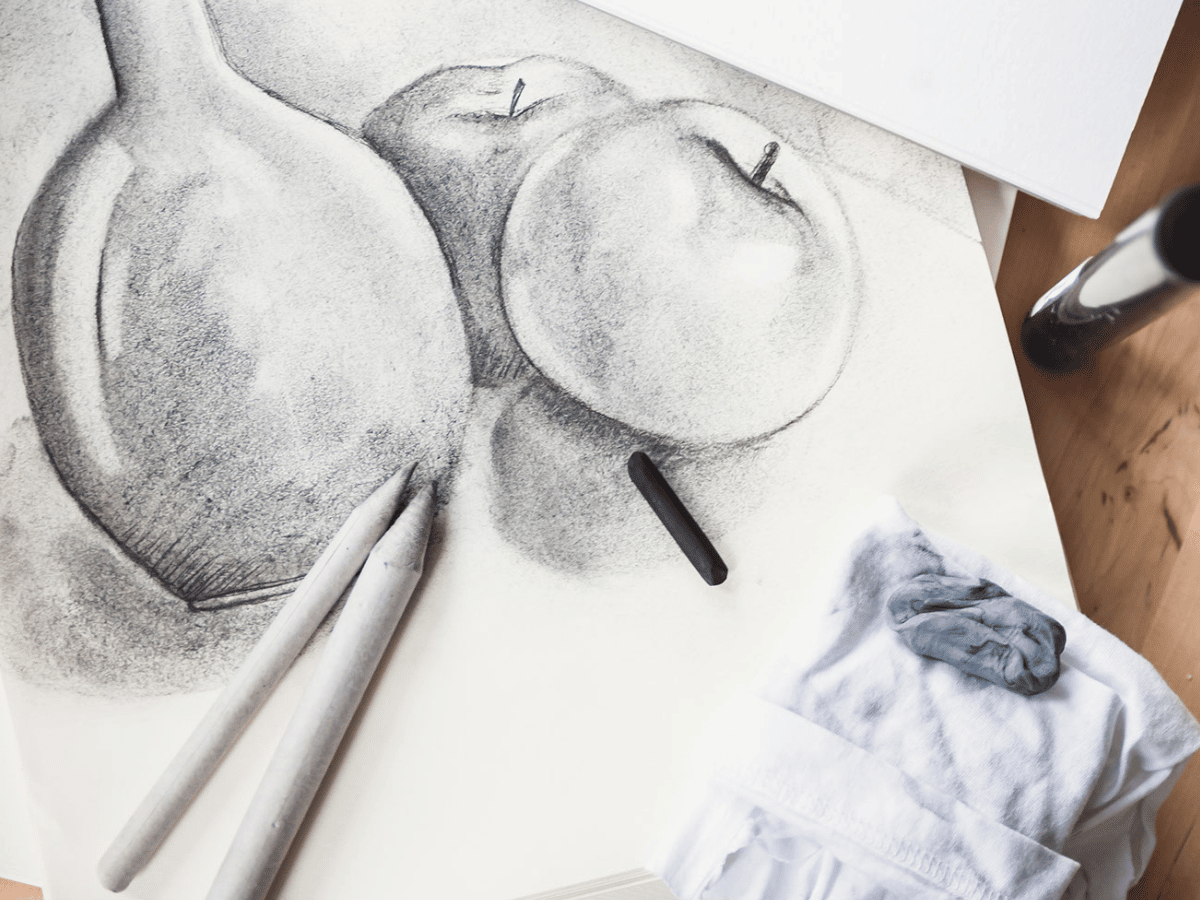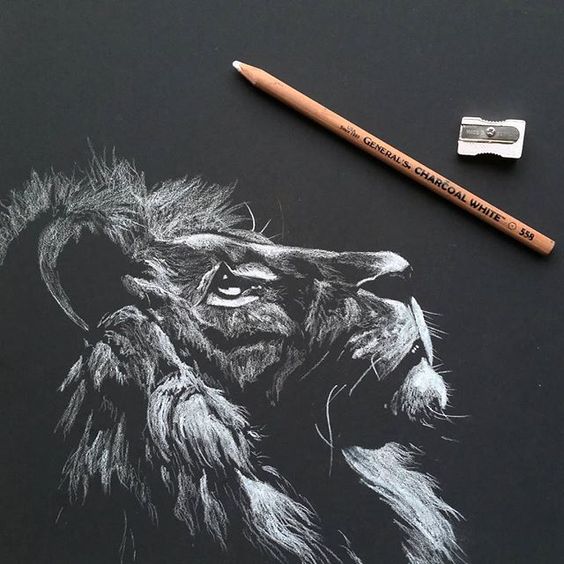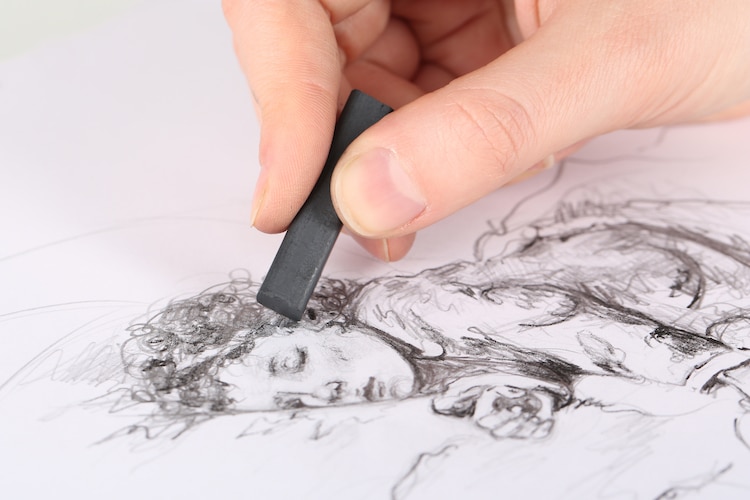Charcoal drawing is a form that has captivated artists for centuries, offering a rich avenue for creative expression through its unique texture and range of tonality. Whether you’re an established artist or just beginning to explore charcoal, this exploration of novel drawing ideas will spark your artistic imagination. We will look at techniques and subjects that serve as catalysts for creativity, helping you break out of routine and venture into fresh, inventive territory with charcoal art.
Experimenting with Light and Shadow
Chiaroscuro: The Drama of Contrast
In charcoal drawing, the interplay between light and shadow can create powerful visual narratives. The technique known as chiaroscuro involves using stark contrasts to build depth and volume in drawing. Purposefully place bold highlights against intense shadows to give your subjects a dramatic, almost three-dimensional appearance. Experimenting with this technique can elevate simple subjects to striking compositions.
Silhouette Studies: Shape and Simplicity
Focus on the outline of an object or scene and fill it with solid, uniform darkness, leaving the background or select details in lighter tones. This reversal of typical shading can yield fascinating and sometimes abstract forms. Silhouettes encourage the viewer’s imagination to fill in the details, making them an excellent practice for playing with a viewer’s perception.

Embracing Texture and Form
The World in Textures
Charcoal allows you to mimic a wide range of textures realistically. Create a series of studies focusing exclusively on different textures, such as the rough bark of a tree, the soft fur of an animal, or the smoothness of water. Learning how to depict these textures with charcoal will not only refine your technique but also enliven your larger compositions with convincing details.
Organic Abstractions
Instead of striving for realistic representations, let the medium guide you towards abstraction. Charcoal’s versatility is perfect for creating organic shapes and forms that flow naturally across the page. This process can be therapeutic for artists, providing them with an emotional outlet and a break from the precision often required in representational art.

Pushing Compositional Boundaries
Dynamic Perspectives
Challenge yourself by choosing unusual vantage points for your charcoal drawings. Looking at a subject from below, above, or through a skewed lens can offer new creative insights. Similarly, cropping a familiar scene can add an element of intrigue and force you to consider composition in new ways.
Combining the Figurative with the Surreal
Combine realistic figures with elements of fantasy or surrealism to create captivating scenarios. This juxtaposition can intrigue and captivate viewers, inviting them to form their narratives and interpretations of your work. Blending what is possible with the impossible allows you to traverse beyond the boundaries of conventional drawing into an imaginative and unlimited space.

Incorporating Color
Subtle Hints of Pigment
While charcoal is a monochromatic medium, incorporating subtle hints of color can introduce a new dimension to your work. Use touches of pastel or a selective application of colored pencils to your charcoal drawings. This pop of color against the grey tones can emphasize certain aspects of your drawing and add a new layer of emotional resonance.
Full Spectrum Integration
For those unafraid to mix their mediums, integrate charcoal with watercolor, acrylic, or even ink. The contrast between charcoal’s matte finish and the gloss or transparency of other mediums can produce striking results. By expanding your toolbox, you invite a level of complexity into your art that monochrome drawing alone cannot achieve.

Capturing Movement: The Life in Stillness
Animating via Gesture Drawing
Embrace the challenge of capturing movement on a still page by engaging in gesture drawing. Using charcoal for its ability to quickly cover ground, sketch the essence of a moving subject, such as dancers, athletes, or bustling street scenes. The goal is to record the fundamental shapes and implied motion in as few strokes as possible. This approach not only injects a sense of life into your drawings but also hones your skills in observing and distilling movement.
Sequential Narratives: A Charcoal Storyboard
Consider storytelling through a sequence of charcoal images. Much like a storyboard, create a series of scenes or images that convey a progression of actions or express a change over time. This not only practices your ability to depict movement but also challenges your conceptual skills in creating a narrative flow within your artworks.

The Interplay of Scale: Exploring Space and Depth
Juxtaposition of Sizes for Impact
Examine the impact of scale in your subjects. By drawing objects or figures at varying scales, you can play with a viewer’s sense of space and depth. Place a small figure against a massive backdrop or draw a close-up detail of a subject typically seen from afar. Playing with scale offers another dimension to your charcoal compositions, presenting ordinary subjects in a new, more impactful light.
Large-Scale Charcoal Murals
Take your charcoal creativity out of the conventional sketchbook and onto larger canvases – or even walls. By working on a larger scale, you engage with the charcoal medium in a physically different way, which can alter your approach to the drawing process. A mural-sized drawing invites bolder movements, grander gestures, and a deep engagement with your subject matter.
The Fusion of Mixed Textures
Layering Different Papers and Surfaces
Charcoal’s versatile nature pairs well with a variety of textures. Try drawing on different types of paper or even unconventional surfaces like wood or textured fabric. The way charcoal adheres to these surfaces varies and can influence the final appearance of your artwork. The exploration of such textures in your base material can yield inspiring and unexpected results that enhance the depth and interest of your work.
Incorporating Collage Elements
Consider integrating the collage technique into your charcoal drawings. Paste cut-outs from magazines, patterned paper, or even segments of photographs onto your drawing surface before or after applying charcoal. This can create a dynamic interplay between the printed image and the raw expressiveness of charcoal. Such collages can elevate your compositions, offering commentary or simply a visual juxtaposition that provokes thought.
Charcoal drawing is a practice steeped in history but always ripe for innovation. By pushing the boundaries of light and shadow, embracing texture, exploring composition, and even integrating color, artists can find new ways to express their vision with vibrancy and depth. Each unique idea serves as a stepping-stone to expanded creativity and mastery of this timeless medium. Whether you’re drawing from life or your imagination, remember that the most compelling charcoal art comes not just from skill, but from the spark of creativity that lives within every artist.